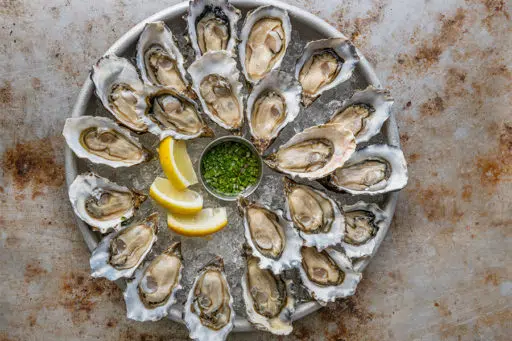How to Eat Oysters
Don’t be intimidated by a platter of raw oysters. This article and video will show you everything you need to know to look like an oyster connoisseur.
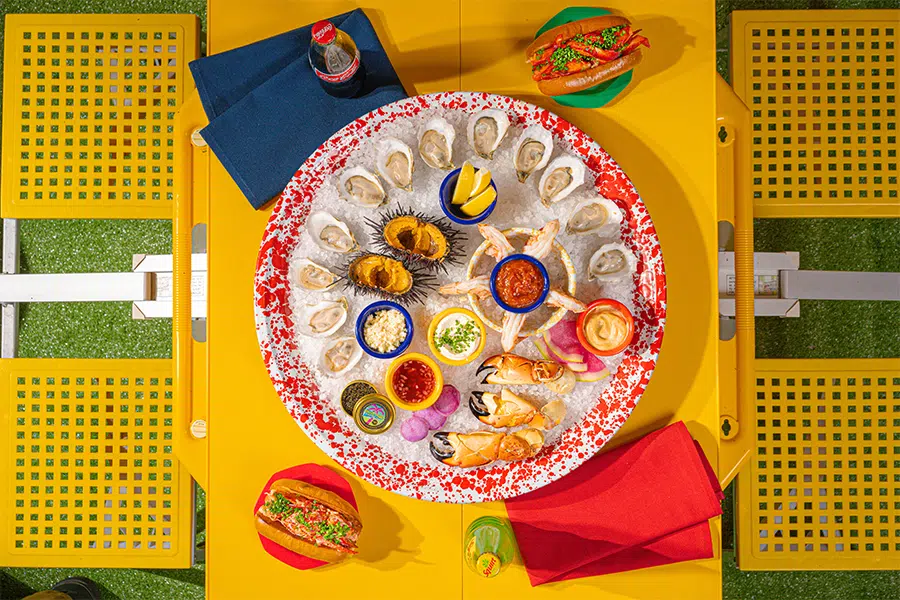
Today, oysters are my favorite food, but like many people, I wasn’t sure what to do when I encountered my first platter of oysters on the half shell. Sure, I had seen people eat oysters in movies and out and about, but I wasn’t confident in the actual logistics. I glanced around the oyster bar and saw other diners picking them up and tipping them back into their mouths. So, I did the same and discovered this incredible delicacy.
There are many different ways to eat and serve oysters, including raw, baked, fried, and grilled. This article covers each of these methods, including oyster etiquette and frequently asked questions so you’ll be confident no matter where you are. Unfamiliar with oysters? Be sure to check out our oyster guide for everything you need to know before you walk into a restaurant.
How to Eat Oysters
The main ways to eat oysters are raw or cooked on the half shell.
What Are Oysters?
Oysters are shellfish, and there are several different species. They can be large or small, sweet or briny.
The main types of oysters are:
- Atlantic oysters, also known as East Coast oysters — Crassostrea virginica
- Pacific oysters, also known as West Coast oysters — Crassostrea gigas
- Olympia oysters — Ostrea lurida
- Kumamoto oysters — Magallana sikamea
- European flat oysters, also known as Belon oysters — Ostrea edulis
The most common oysters in the US are Atlantic and Pacific oysters. Atlantic, or East Coast, oysters have a briny, salty taste, while Pacific oysters can be creamier and less salty. Some consider Pacific oysters to be a great beginner oyster because they are a little more approachable. Other people find them to be a little boring and prefer the bracing brininess of Atlantic oysters. Kumamotos are Japanese oysters that are small and can have flavors of cucumber and melon. Olympia oysters are quite rare and only found in the state of Washington. Pacific, Olympia, and Kumamoto are grouped together as West Coast oysters. European flat oysters are also difficult to come by but have a unique flavor profile. While Olympia oysters are small and delicate, European flat oysters tend to be quite large, with a smoky, metallic taste.
Most oyster bars will stock a variety of oysters, while restaurants typically serve one or two types of local oysters. If you’re ordering Pacific oysters on the East Coast, they’ll have been freshly flown in, but don’t be afraid to ask when the restaurant received them. You don’t want to eat oysters that are more than a couple of days old.
What Are the Benefits of Eating Oysters?
- Oysters are a great source of vitamins and minerals, including many that people are deficient in. For example, oysters contain vitamin B12, vitamin D, zinc, magnesium, selenium, and iron.
- Another health benefit of oysters is that they contain nearly 10 times more zinc per serving than any other food.
- Even though oysters have a lot of nutrients, they are a low-calorie food, with just 68 calories per 3.5-oz serving (approximately 6-8 oysters, depending on size). They’re definitely a decadent weight-loss food.
- Some oyster proponents say they help reduce your risk of heart disease and improve heart health, but there are no definitive studies to prove this.
- The potassium in oysters might help control blood pressure when eaten regularly.
The Different Ways to Eat Oysters
Raw on the Half Shell
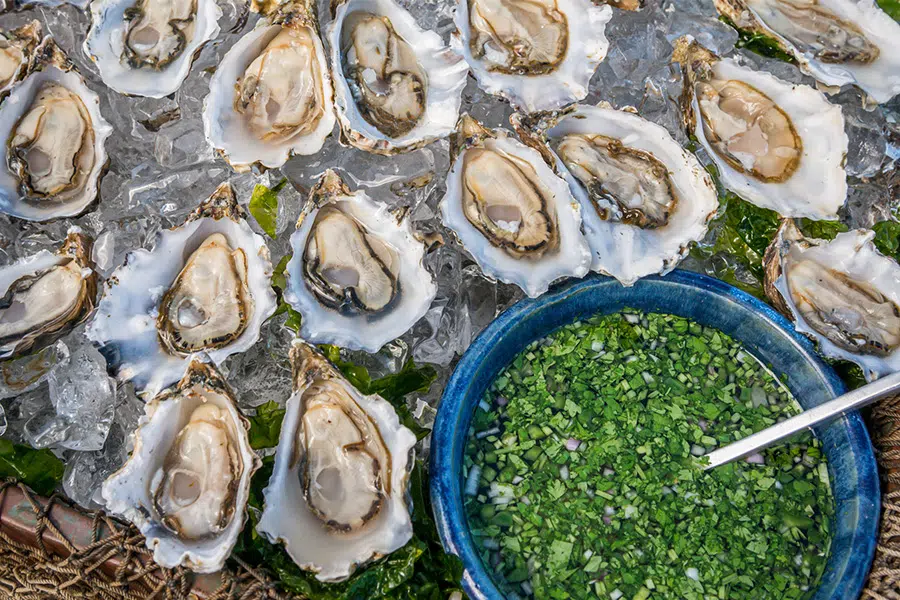
The most common way to eat oysters at restaurants is raw, which is called “served on the half shell.” A shucker will pry open the fresh oyster, remove the top half of the shell, and nestle the bottom of the shucked oyster into a bed of ice to keep it cold.
Step 1
Pick up an oyster from the tray. Sniff the oyster to be sure it smells fresh, like the sea. If it smells like rotten eggs or sulfur, do not eat it. This means the oyster has gone bad. If you’re at home, throw it away. If you’re in a restaurant — which should not happen! — tell the server, and they will replace it.
Step 2
If you want to add condiments to the oyster, do this now. Common accouterments include lemon, mignonette, hot sauce, and cocktail sauce. My favorite way to eat oysters is naked, without anything, or with a couple of drops of lemon juice. I don’t recommend eating oysters with cocktail sauce or tabasco, because oysters have a delicate flavor, and these powerful sauces will overwhelm them.
Step 3
Next, take the small fork that accompanies your oysters and check to be sure the muscle is no longer attached to the shell. The shucker should sever the muscle, but sometimes they miss, which means the oyster will stay in the shell, not go into your mouth. If it’s still attached, pull the oyster until it releases.
Step 4
Bring the wider side of the oyster to your lips and open your mouth. Tip the oyster, liquid and all, into your mouth. If you don’t want to swallow the liquor — which I think is one of the best parts — you can pick up the oyster with the fork and eat it.
Step 5
Chew the oyster several times, then swallow it.
Step 6
Place the oyster shell back into the tray in the same spot, with the bottom of the shell facing up. This lets you see which oysters are left, and the server knows when you are finished.
Baked Oysters
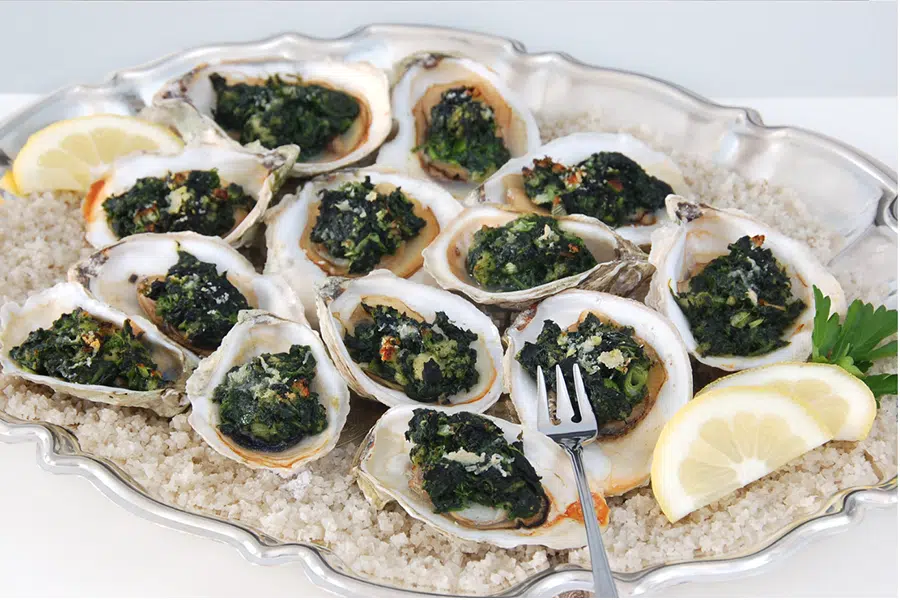
If you don’t want to eat raw oysters, there are plenty of ways to cook oysters. Baked oysters are a popular way to cook oysters, but you can also grill, steam, or stew them. The most famous baked oyster is Oysters Rockefeller, but they come with various toppings, including herbs, butter, and breadcrumbs, or they can be cooked plain.
Cooked oysters are served on the half shell on a platter, and any sauce will be inside the shell. First, a word of caution. Cooked oysters can be extremely hot, especially the liquid inside. If you eat them too quickly, you can burn the inside of your mouth. Test the temperature of the liquid by dipping your fork into it and tasting it, or touching the outside of the shell with your fingers.
Once you’re certain the oyster is safe to eat, use your fork to ensure the oyster is no longer connected to the shell, bring the wide part of the oyster shell to your lips, and tip the delicious mixture into your mouth. Chew it a few times, then swallow.
Grilled Oysters
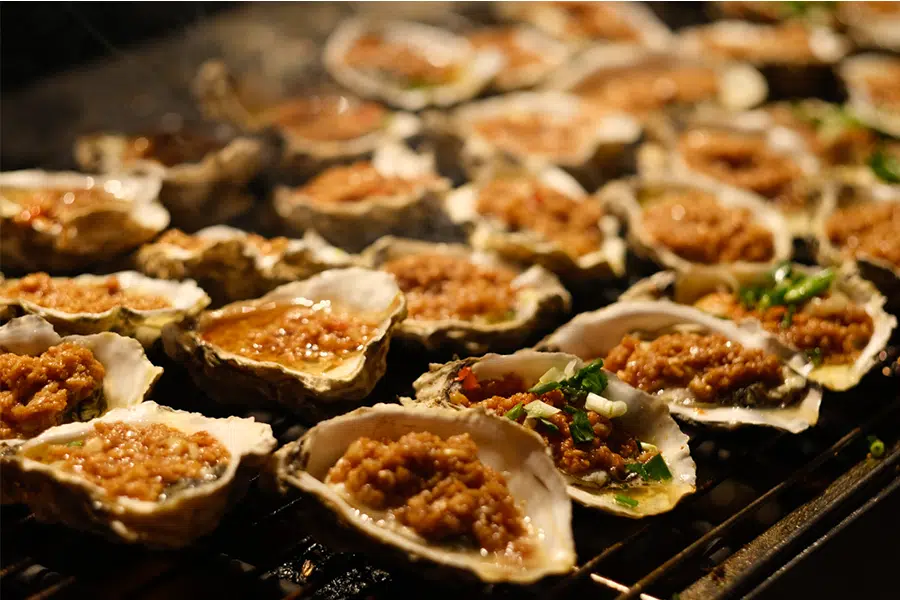
Grilled oysters are easy to make, and as a bonus, you don’t need to shuck them. Place the whole oyster on the grill with the cup side facing down. After a few minutes, the shell will pop open, and it’s effortless to remove. Take the oysters off of the grill and put them on a platter. You can top them with flavored butter or eat them plain. Once they’re cool enough to eat, slide the oyster into your mouth or eat it with a fork.
Fried Oysters
Fried oysters are completely different from raw oysters. They’re more like fried calamari or popcorn shrimp. Simply spear the fried oyster with your fork, dip it into the accompanying sauce, and enjoy. Another popular way to eat fried oysters is in a sandwich called a po’boy.


